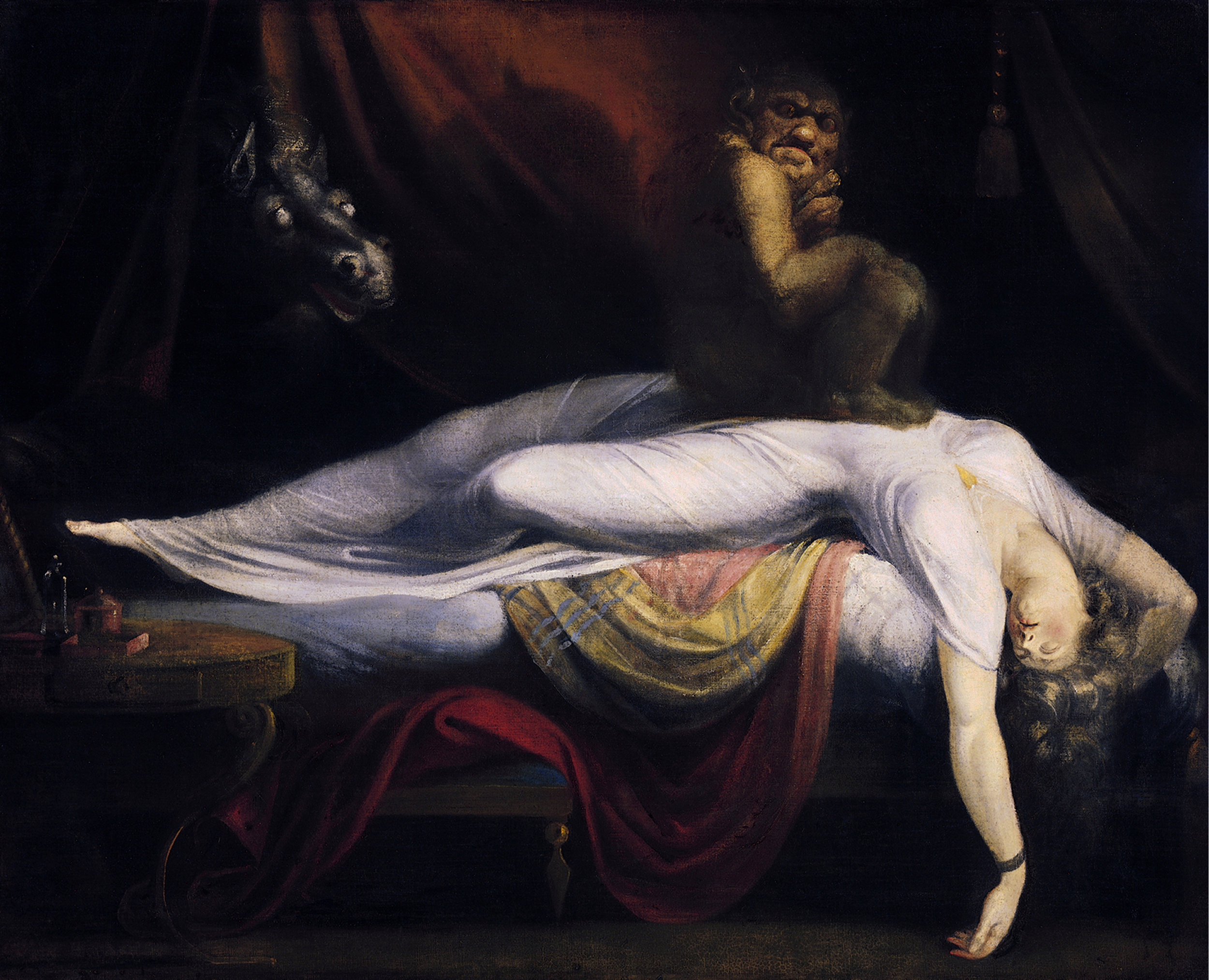Science Ain't Afraid of No Ghosts!
/Image by Toa Heftiba
According to polls, around half of all Americans believe in ghosts. Close to 20% report having seen one at some point in their lives. Though it is beyond the scope of the Bruce Museum Science Department to come down one way or another on the existence of ghosts, what we can say is this: Many paranormal encounters can be explained with science!
Carbon Monoxide Hallucinations
The Bruce Science team hopes you have a carbon monoxide detector in your house. If you don’t, you could be at risk for paranormal hallucinations, or even death.
Carbon monoxide is an odorless and colorless gas that can be produced by household appliances that run on gas, coal, oil, or wood. When inhaled, carbon monoxide is readily absorbed by red blood cells. This prevents red blood cells from carrying as much oxygen, which can lead to oxygen deprivation. The more carbon monoxide in the air, the worse the risk is.
As someone begins to feel the effect of carbon monoxide poisoning, they will experience a variety of symptoms. They could hallucinate and suffer from headaches, fatigue, confusion, nausea, weakness, or melancholy. With continued exposure, these symptoms can last for months and can cause entire families to conclude that they are the victims of haunting. Carbon monoxide poisoning can cause erratic irrational behavior and memory gaps too, which has led to people writing themselves notes, forgetting about it, and then being terrified upon discovery.
If this sounds like something you or someone you know are going through, get a carbon monoxide detector immediately! It could save your life. The Victorian Era is considered a prime time for hauntings and ghost stories, a time period when people just so happened to be bringing gas lamps (and carbon monoxide) into their homes for the first time. Coincidence? Probably not.
Infrasound
Humans without any hearing difficulties can hear a range of sounds from about 20 to 20,000 hertz (Hz). The sounds that lie below the range of our hearing are called infrasound, and may be behind some reported cases of haunting.
When exposed to infrasound, people report awe, dread, depression, or feeling like they’re being watched. Sometimes the vibrations can be felt in parts of the body like the stomach, producing confusing discomfort. When these “silent sounds” are picked up by the eye, they can cause visual hallucinations as well.
Some locations that have a reputation for being haunted are indeed permeated by infrasound. Infrasound can be created by certain appliances or engines, by wind or other weather, and sometimes even by cars going by. It isn’t clear why humans react to sounds they cannot hear in this way, but some evidence points towards infrasound interacting with the inner ear, the same region that triggers seasickness.
The Nightmare. Painting by Henry Fuseli.
Sleep Paralysis
Sleep paralysis is a strange state between wakefulness and dreaming when a person feels conscious but is unable to move their body or make a sound. For some, sleep paralysis can be a terrifying experience. People may have visual hallucinations or other “waking dreams” while they are paralyzed. They might see frightening visions of ghosts, aliens, demons, or simply become overwhelmed by a feeling of dread. Some people feel physical sensations too, like they’re being choked or sat upon.
Sleep paralysis may be responsible for all sorts of reported paranormal encounters, like ghost sightings, demonic visitations, or visions of alien abductions. Around 8% of the population experiences sleep paralysis from time to time, making this a relatively common way to produce ghost sightings.
Electromagnetic Fields
Under experimental conditions, scientists applied electromagnetic fields to the brains of volunteers and were able to produce feelings commonly associated with hauntings. Some volunteers had positive experiences, like feelings of religious awe or the presence of God. Others reported phantom sensations of being touched, or like there was a presence nearby they couldn’t see.
Paranormal investigators often describe electromagnetic abnormalities as a sign of ghosts, but it is more likely that odd electromagnetic fields are triggering ghost sightings, rather than vice versa.
The Phantom of Kohada Koheiji. Print by Katsushika Hokusai.
The Power of Suggestion and Other Brain Glitches
Some people don’t need carbon monoxide, infrasound, or electric phenomena to experience ghosts. Sometimes a suggestion alone is enough. When people are told that a place is haunted, they are much more likely to report intense or uneasy experiences there. This is especially true when someone already believes in ghosts.
The brain is a wonderful organ and capable of amazing feats, but it can also be the source of errors and glitches. Something as simple as sleep deprivation can lead to mild visual hallucinations. Drug use or varieties of epilepsy can as well. Even doing chores can lead to a supposed paranormal encounter. When someone is daydreaming during a mindless monotonous task, the brain can get inventive. The brain might register movement in peripheral vision and fill in the blank, adding the illusion of a figure that vanishes when the person turns to look at it.
Many cases of ghostly sightings stem from these miscommunications between the body and brain. What about physical evidence for haunting? The natural creaking of a house undergoing changes in temperature can sound like footsteps, and hidden drafts can create pockets of cold. If you have strange floating spots show up in your photographs, it’s probably a camera problem or dust.
Is there such a thing as ghosts? Perhaps, but many of these sightings can be chalked up to science instead.
Kate Dzikiewicz, Paul Griswold Howes Fellow

















